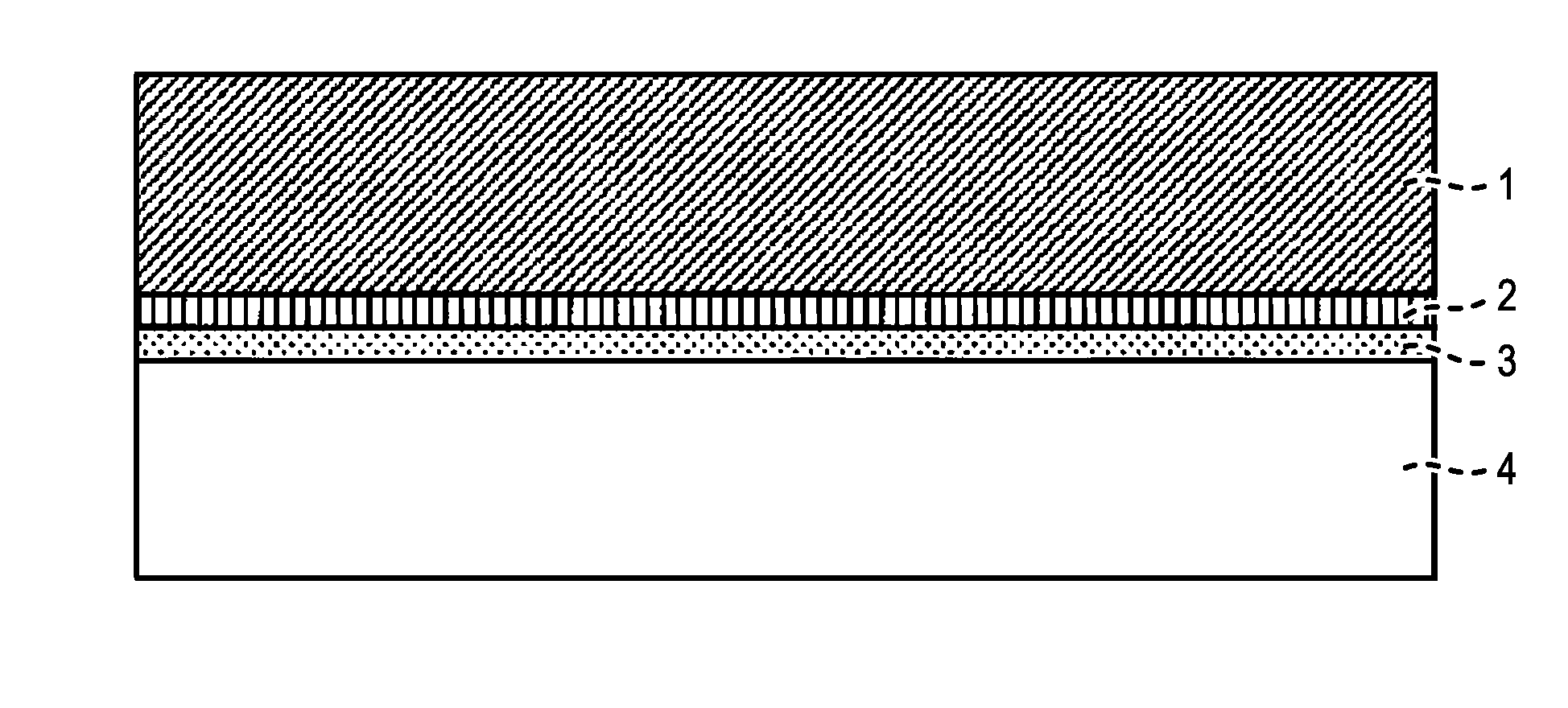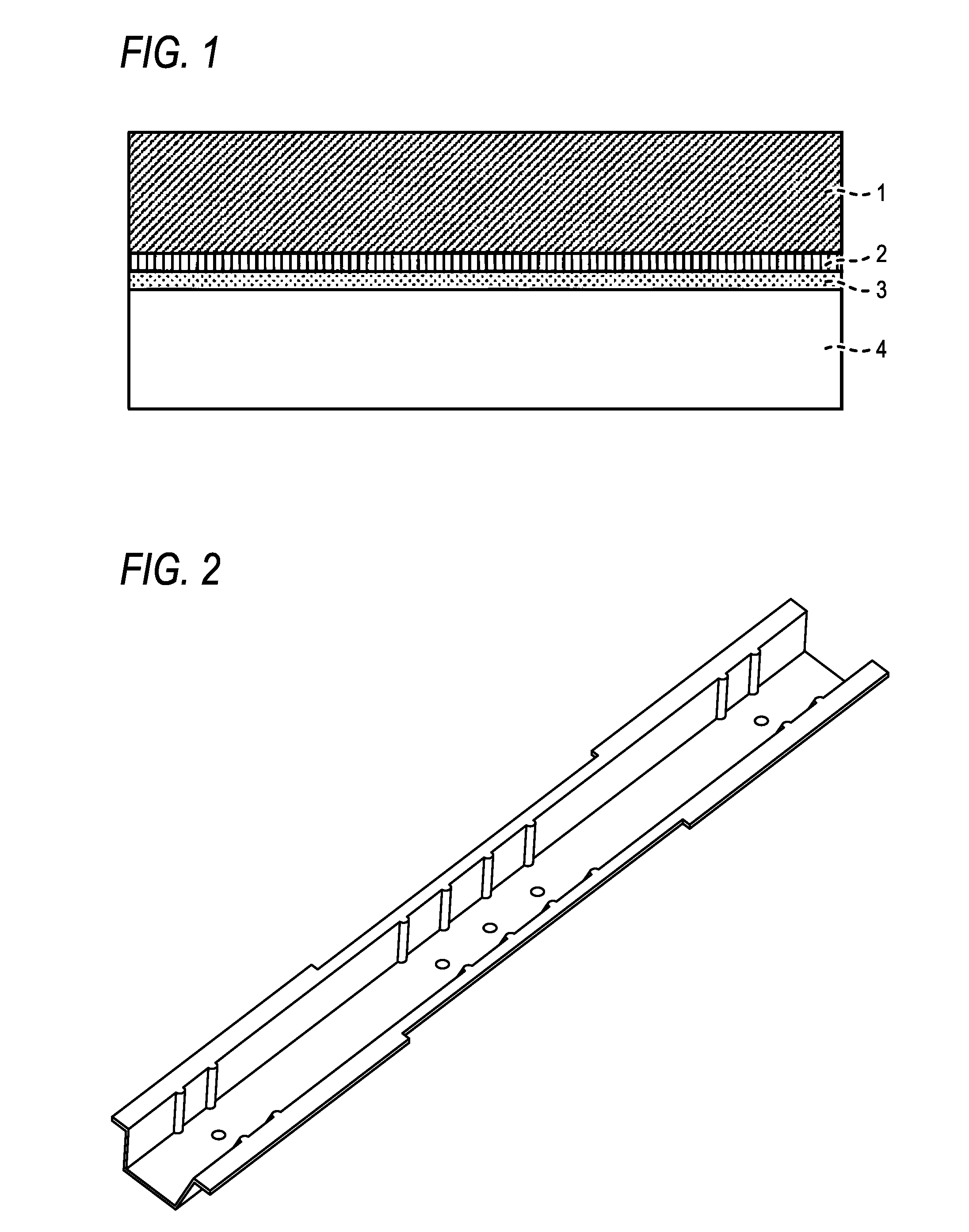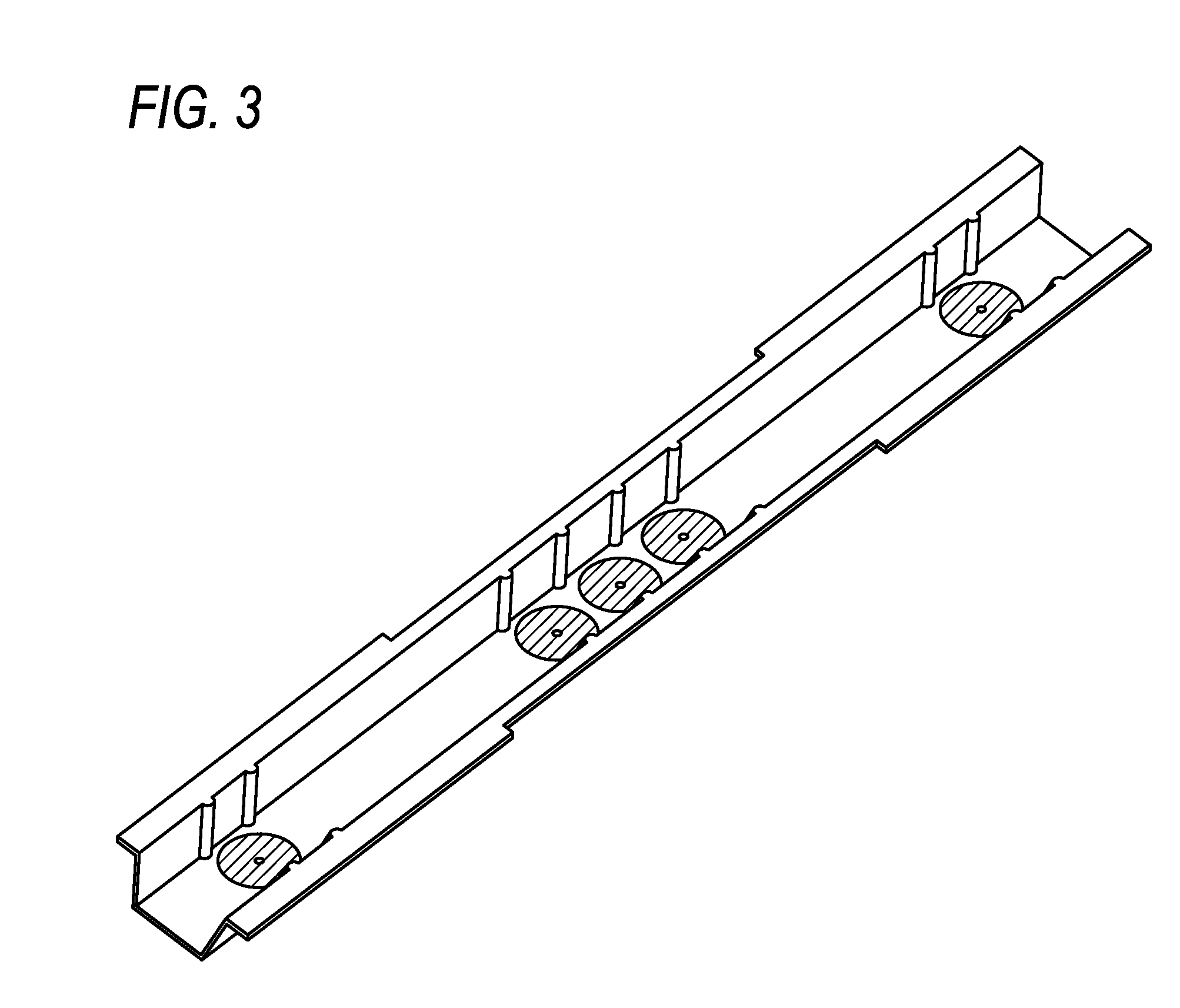Joint Member and Method for Producing the Same, and Method for Producing Metal Composite Molded Product
a joint member and metal composite technology, applied in the direction of adhesive processes, manufacturing tools, mechanical equipment, etc., can solve the problems of increasing the weight of the obtained joint member, the strength of the obtained joint is not always sufficient with only the adhesive, and the joint to the metal by welding is difficult, etc., to achieve the effect of preventing the electrolytic corrosion caused by carbon fiber simultaneously, short time period, and less number of steps
- Summary
- Abstract
- Description
- Claims
- Application Information
AI Technical Summary
Benefits of technology
Problems solved by technology
Method used
Image
Examples
reference example 1
Production of Carbon Fiber Composite Material of Continuous Fiber 0° and 90° Alternate Stacking Materials
[0079]Strands of carbon fibers (“TENAX”™ STS40-24KS (fiber diameter: 7 μm, tensile strength: 4,000 MPa), manufactured by Toho Tenax Co., Ltd.) and nylon 6 films (“EMBLEM”™ ON, 25 μm thick, manufactured by Unitika Ltd.) were sequentially stacked to stack 64 layers (carbon fiber: 64 layers, nylon: 65 layers) such that layers having a fiber direction of 0° and layers having a fiber direction of 90° were arranged alternately, and the resulting assembly was compressed under heating at 260° C. under a pressure of 2 MPa for 20 minutes. Thus, a carbon fiber composite material having 0° and 90° alternate fibers, symmetric stacking, carbon fiber volume content: 47% (content of carbon fibers in mass basis: 57%) and a thickness of 2 mm was prepared.
reference example 2a
Production of Flat Plate Carbon Fiber Composite Material (A)
[0080]Carbon fibers (“TENAX”™ STS40, average fiber diameter: 7 μm, manufactured by Toho Tenax Co., Ltd.) cut into an average fiber length of 16 mm were randomly arranged such that an average density is 540 g / m2, and were sandwiched among 10 cloths of KE 435-POG (nylon 6), manufactured by Unitika Ltd. The resulting assembly was pressed at 260° C. under 2.5 MPa to prepare a flat plate carbon fiber composite material having 1400 mm×700 mm, a carbon fiber volume content of 35% (content of carbon fibers on the basis of mass: 45%) and a thickness of 2 mm.
reference example 2b
Production of Flat Plate Carbon Fiber Composite Material (B)
[0081]Carbon fibers (“TENAX”™ STS40, average fiber diameter: 7 μm, manufactured by Toho Tenax Co., Ltd.) were cut into an average fiber length of 20 mm and were formed into a carbon fiber sheet in a random arrangement state such that an average density is 540 g / m2. The carbon fiber sheet were sandwiched among cloths of KE 435-POG (nylon 6), manufactured by Unitika Ltd. so as to form an assembly by repeatedly stacking of carbon fiber sheet / nylon 6 cloth. The resulting assembly was pressed at a temperature of 260° C. under a pressure of 2.5 MPa to prepare a flat plate carbon fiber composite material (B) having a carbon fiber volume content of 35% (content of carbon fibers on the basis of mass: 45%) and a thickness of 2 mm.
PUM
| Property | Measurement | Unit |
|---|---|---|
| Percent by mass | aaaaa | aaaaa |
| Thickness | aaaaa | aaaaa |
| Thickness | aaaaa | aaaaa |
Abstract
Description
Claims
Application Information
 Login to View More
Login to View More - R&D Engineer
- R&D Manager
- IP Professional
- Industry Leading Data Capabilities
- Powerful AI technology
- Patent DNA Extraction
Browse by: Latest US Patents, China's latest patents, Technical Efficacy Thesaurus, Application Domain, Technology Topic, Popular Technical Reports.
© 2024 PatSnap. All rights reserved.Legal|Privacy policy|Modern Slavery Act Transparency Statement|Sitemap|About US| Contact US: help@patsnap.com










